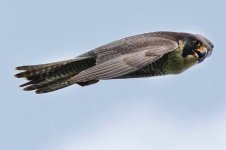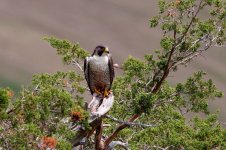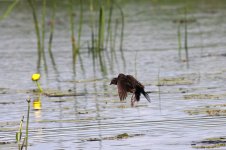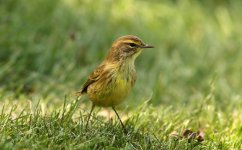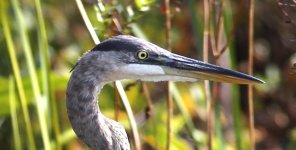wary_cassowary
Artist and Amateur Avian Aficionado

Hello! I’m a novice bird photographer, and I’m trying to improve my skills. I’ve spent a lot of money on my camera set up, and it’s been wonderful for the past few years; however, I’m often disappointed with my image quality.
Here’s the specs and shooting style I’m working with:
Body: Nikon D500
Lens: Nikon AF-S Nikkor 200mm-500mm F/5.6 ED VR
Photographer: Still mastering manual settings, so definitely not the best model I shoot handheld, since I prefer to hike instead of camping in one spot. So I can’t carry anything heavier than my current setup.
I shoot handheld, since I prefer to hike instead of camping in one spot. So I can’t carry anything heavier than my current setup.
I’m mostly struggling with excessive noise and grain, and it seems that nearly all my photos have unacceptable noise levels on overcast days (I live in Oregon, so that’s a lot of days). With only 500mm of zoom, I often need to crop to fill the frame, but the noise makes cropped photos unprintable. I shoot at f5.6 almost always to get as much light as possible, use auto iso with a max sensitivity of 2500, and shutter speeds around 800-2000th of a second to try and freeze wings, which usually leads to under exposure and blurry wings anyway. I’ll post some images as examples (with specs below). Am I imagining that this is way more grain than other wildlife photographers are getting in their images?
The problem is, I don’t have the money to fully upgrade my system. It seems the best quality upgrade would be to sell all my current setup and replace go fully mirrorless, but I can’t afford it. So here’s my question for the experts: is there a way I could replace only one or two pieces of gear and come away with improved image quality, or should I just wait till I can afford a whole new system? If you can give me some advice of possible setups I could research, I can figure out what I can afford from there.
-
Possible upgrade ideas that I know of:
1- Keep the lens, upgrade to a mirror less Nikon body and buy a lens adapter (and possibly struggle with autofocus issues)
2- Keep the D500 body, upgrade the lens (not sure what options I’d have here). I really like the ability to zoom with the 200-500mm, but could possibly consider a prime. Or I guess a shorter lens plus a teleconverter, then battle distortion problems?
3- My husband (he’s a wedding photographer) has an extra body I could use, a A73 Sony (mirrorless). Maybe I could buy a converter and stick my Nikon 200-500mm lens on that body? He’s not sure how much the quality would increase.
4- Save my money and focus on mastering my skills to improve my image quality with the gear I’ve got, and maybe play around with software like Topaz sharpening to reduce noise in post processing. And learn to be grateful for the setup I've got!
Please let me know what you think, and thank you in advance for any advice! Happy birding!
P.S. Specs for the attached images, if anyone wants to know:
I'iwi: 1/1600, f/5.6, ISO 720
Pipit: 1/1250, f/5.6, ISO 720
Cardinal: 1/350, f/5.6 ISO 1400. This one's a great example of overcast conditions being too dark for flight shots with my current set up. Maybe I could have gotten a usable image with different settings, but wanted to include this one cause it's so common for me: in overcast (but still pretty bright) light, flight shots seem impossible.
Here’s the specs and shooting style I’m working with:
Body: Nikon D500
Lens: Nikon AF-S Nikkor 200mm-500mm F/5.6 ED VR
Photographer: Still mastering manual settings, so definitely not the best model
I’m mostly struggling with excessive noise and grain, and it seems that nearly all my photos have unacceptable noise levels on overcast days (I live in Oregon, so that’s a lot of days). With only 500mm of zoom, I often need to crop to fill the frame, but the noise makes cropped photos unprintable. I shoot at f5.6 almost always to get as much light as possible, use auto iso with a max sensitivity of 2500, and shutter speeds around 800-2000th of a second to try and freeze wings, which usually leads to under exposure and blurry wings anyway. I’ll post some images as examples (with specs below). Am I imagining that this is way more grain than other wildlife photographers are getting in their images?
The problem is, I don’t have the money to fully upgrade my system. It seems the best quality upgrade would be to sell all my current setup and replace go fully mirrorless, but I can’t afford it. So here’s my question for the experts: is there a way I could replace only one or two pieces of gear and come away with improved image quality, or should I just wait till I can afford a whole new system? If you can give me some advice of possible setups I could research, I can figure out what I can afford from there.
-
Possible upgrade ideas that I know of:
1- Keep the lens, upgrade to a mirror less Nikon body and buy a lens adapter (and possibly struggle with autofocus issues)
2- Keep the D500 body, upgrade the lens (not sure what options I’d have here). I really like the ability to zoom with the 200-500mm, but could possibly consider a prime. Or I guess a shorter lens plus a teleconverter, then battle distortion problems?
3- My husband (he’s a wedding photographer) has an extra body I could use, a A73 Sony (mirrorless). Maybe I could buy a converter and stick my Nikon 200-500mm lens on that body? He’s not sure how much the quality would increase.
4- Save my money and focus on mastering my skills to improve my image quality with the gear I’ve got, and maybe play around with software like Topaz sharpening to reduce noise in post processing. And learn to be grateful for the setup I've got!
Please let me know what you think, and thank you in advance for any advice! Happy birding!
P.S. Specs for the attached images, if anyone wants to know:
I'iwi: 1/1600, f/5.6, ISO 720
Pipit: 1/1250, f/5.6, ISO 720
Cardinal: 1/350, f/5.6 ISO 1400. This one's a great example of overcast conditions being too dark for flight shots with my current set up. Maybe I could have gotten a usable image with different settings, but wanted to include this one cause it's so common for me: in overcast (but still pretty bright) light, flight shots seem impossible.
Attachments
-
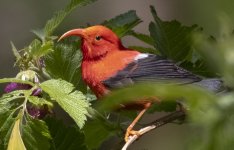 _DSC3564 I'iwi Glamour Shot 100% Crop.jpg941.6 KB · Views: 52
_DSC3564 I'iwi Glamour Shot 100% Crop.jpg941.6 KB · Views: 52 -
_DSC5525 Cardinal Missed Shot Full Frame.jpg15.4 MB · Views: 7
-
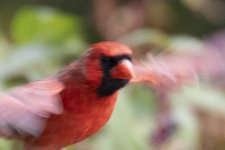 _DSC5525 Cardinal Missed Shot 100% Crop.jpg935 KB · Views: 53
_DSC5525 Cardinal Missed Shot 100% Crop.jpg935 KB · Views: 53 -
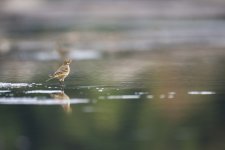 _DSC5381 Northern Pipit Full Frame.jpg11.2 MB · Views: 51
_DSC5381 Northern Pipit Full Frame.jpg11.2 MB · Views: 51 -
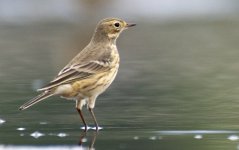 _DSC5381 Northern Pipit 100% Crop.jpg790.5 KB · Views: 55
_DSC5381 Northern Pipit 100% Crop.jpg790.5 KB · Views: 55 -
_DSC3564 I'iwi Glamour Shot Full Frame.jpg12.4 MB · Views: 7





